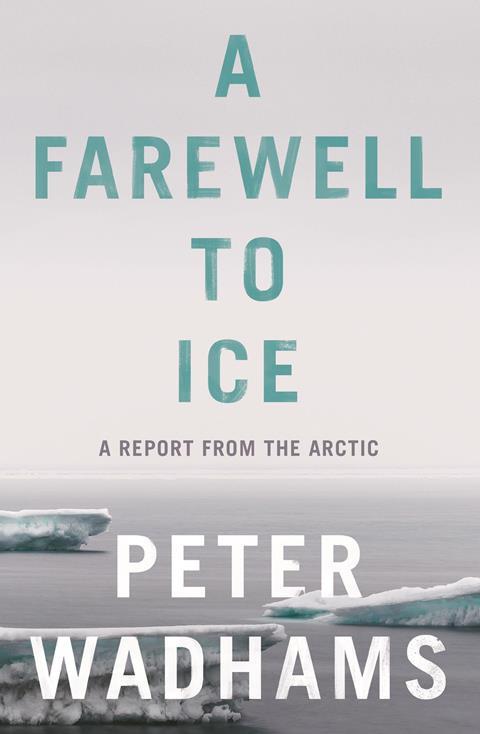Peter Wadhams
Allen Lane
2016 | 256pp | £20.00
ISBN 9780241009413
Buy this book from Amazon.co.uk

‘People often ask me if I believe in global warming,’ an Icelandic glacier guide recently told me. ‘But there is no believing or not believing in climate change – not believing in it would be like not believing in breathing.’ Over the last few years he had seen the glaciers retreat dramatically – a trend that is reflected globally.
A farewell to ice takes a closer look at what will happen when our planet permanently loses one of its largest icy areas: the Arctic sea ice. Covering what would otherwise be open ocean, author Peter Wadhams estimates that 2017 or 2018 will see the first ice-free Arctic summer. For the first time in human history ships will be able to cross over the north pole.
Focusing on Arctic sea ice initially struck me as odd; surely, disappearing ice is little more than one of the many consequences of global warming. Reading Wadhams’ book, however, it became clear that the Arctic sea ice profoundly influences global climate as it increases Earth’s overall reflectance. Losing the last few million km2 of sea ice will have the same warming effect as the last 25 years of carbon dioxide emissions, Wadhams writes.
Having studied Arctic ice since the 1970s, the author brings a wealth of scientific and personal experience to his latest book. Starting off with the basics such as ice formation, climate cycles and the greenhouse effect, he quickly moves on to more advanced science: the climate feedback that causes Arctic ice to disappear in a so-called death spiral; global climate effects triggered by disappearing ice; and the consequences of a catastrophic methane release due to melting marine permafrost.
Wadhams concludes his work in what I felt was one of the book’s strongest chapters. ‘The state of the planet’ is a powerful reminder that global warming will affect every aspect of our lives: food prices will increase as the area of cultivable land changes, and social unrests will follow famines and fuel shortages.
Readers might now wonder what they can do prevent this bleak vision of a warming future, a question Wadhams answers in his last chapter, ‘A call to arms’. While a personal lifestyle adjustment can do its part, change needs to happen on a national and international scale. In particular, we will need to develop working carbon capture and storage technologies as they are the only way to mitigate the warming potential of carbon dioxide already in the atmosphere.
The book is upsetting and not an easy read, but then again, climate change is not an easy topic. I struggled to grasp some of the more complex climate science, but Wadhams’ enthusiastic arguments bring his key points across easily enough. For those wanting to delve further into the science, A farewell to ice includes a 15-page reference section. While I recommend this book to anyone interested in the immediate consequences of global warming, it should be mandatory reading for politicians and policymakers before they start drafting their next climate commitments.

















No comments yet